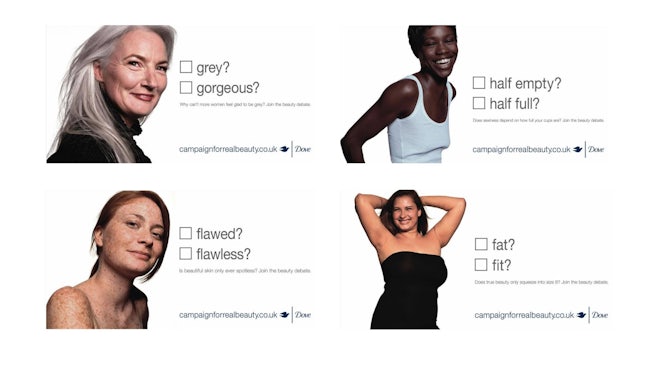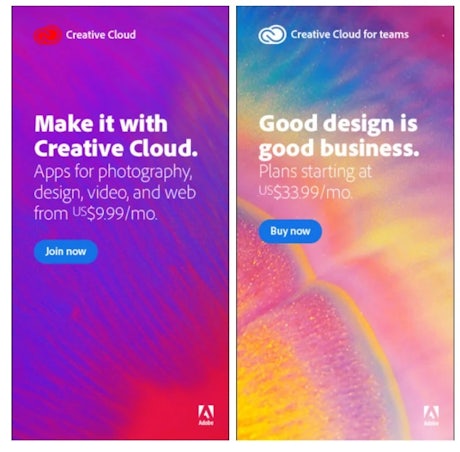The most effective display ads rise above the noise, capture attention, and leave a lasting impression. Whether through superb storytelling, captivating creatives, or perfect placements, display ads can tell powerful stories.
In this blog, we’re showcasing five standout campaigns that caught our attention and made a lasting impact. More importantly, we’ll break down what made them so successful, so you can apply the same winning strategies to your campaigns 💡
1. Disney+: Mastering simplicity and star power
During lockdown, Disney launched a large promotional campaign to introduce Disney+. You might remember these ads, because you couldn’t miss them!
Disney’s display ads were everywhere, from high-impact takeovers to standard banners, all designed to capture new audiences and drive subscriptions to their new CTV platform.
What made their display ads so effective?
- The use of well-known characters: Disney led with their strongest assets, using well-known, loved characters placed front and centre to immediately capture attention.
- Simplicity and the power of branding: Simplicity, when paired with strong branding, can be incredibly impactful. Consistent use of brand colours created a cohesive visual experience, while recognisable logos were strategically placed at the centre of the ads. Although the design was minimal, it made it effortless for audiences to associate the ads with Disney, creating a memorable and lasting brand connection.
- Strong CTA: The cherry on the cake was the strong, action-driven CTA: “Start Free Trial” placed prominently at the end. It’s simple, direct, and creates an immediate sense of a ‘no strings attached’ opportunity, encouraging users to engage without any confusion.
💡Key takeaway: Disney’s campaign is a perfect example of how using simple yet strong visuals, brand trust, and a clear action can turn a simple ad into a powerful driver of growth.
2. New York Times: Building trust in a world of misinformation
In today’s digital climate, fake news and misinformation are everywhere, at just the click of a button. During a time of negativity around online media, The New York Times knew exactly how to address this issue and come out on top.
Their display campaign positioned them as a trusted, credible source in a rapidly changing landscape, reassuring audiences that they could rely on them for quality, verified media.
What made their display ads so effective?
- Tackling a real-world concern: Instead of ignoring the noise around misinformation in media, The New York Times joined in with the conversation. They built their messaging around the promise of truth, making them stand out from competitors and offering audiences a clear, compelling reason to choose them over their competitors.
- Simplicity and strong brand positioning: At first glance, the ads might not seem flashy, but that’s exactly the point! The NYT used a clean, minimal design that stayed true to its established brand identity. The simple visuals and trusted logo reinforced their credibility and authority, allowing audiences to immediately associate the ad with the brand. By keeping the creative simple, they let the strength of their message shine through without distraction.
- Personalised, engaging CTA: The CTA, “See My Options” added a smart, personal touch. Rather than a generic “Subscribe Now,” it invited users to explore subscription packages in a way that felt more tailored to them, encouraging deeper engagement with the user.
💡Key takeaway: This display ad is a fantastic representation of using audience trust and cultural relevance to cut through the noise, and proves that in a chaotic world, audiences gravitate toward brands that they can rely on.
3. Dove: Real beauty campaign
Dove is a leading brand in the beauty industry, particularly recognised for its advocacy of body positivity. The company has launched numerous successful campaigns centred around its ‘Real Beauty’ motto, promoting a more inclusive definition of beauty.
In its Real Beauty Display Campaign, Dove used checklist-style visuals to challenge conventional beauty standards, addressing topics such as weight, ageing, and other common insecurities faced by women. These efforts aimed to replace unrealistic ideals with authentic representations of real people.
What made their display ads so effective?
- They got people talking: These creatives weren’t just there to fill space — they sparked conversation. People saw themselves in the ads and resonated with Dove’s mission to tackle unrealistic beauty standards. The campaign encouraged audiences to share, comment, and actively engage with the brand’s message, turning passive viewers into passionate participants.
- Real images, not retouched perfection: No Photoshop. No flawless models. No glamour. Dove kept it real (literally). The ads featured real people with real bodies and real stories. This raw, stripped-back approach made the message of “Real Beauty” hit harder, because it felt honest and refreshing in an industry often built on ‘perfection’.
- Staying relevant with the times: Dove didn’t guess what their audience cared about — they listened. By using social listening and keeping a pulse on conversations around women’s beauty standards, Dove ensured their campaign stayed relevant. They spoke directly to the concerns and insecurities their audience had, for example, ageing or weight gain.
💡Key takeaway: Dove’s display ads were effective because they combined powerful, authentic visuals with meaningful messaging and thought-provoking questions that resonated with their audience, proving that honesty, relevance, and empathy are a winning combo in the display world.
4. Nintendo Switch
Back in 2017, Nintendo dropped the Switch, its first new console since the Wii U back in 2012. But this wasn’t just another console; it was the first of its kind, allowing gamers to ‘play their way’ via handheld device or on a larger screen, both individually and multiplayer.
Thanks to Nintendo’s great brand affinity, they’ve used bold visuals using brand colours, alongside clear, concise text to help market the new product to the audience.
What made their display ads so effective?
- Crisp, bold visuals: Simple visuals highlight the versatility of the console – a brand new way to game, mixing the perks of both a console and a handheld device, desirable to the users to ‘play their way’
- Simple, enticing CTA: The ads featured a simple, clickable call-to-action that hinted at special offers, enough to spark interest without overwhelming the viewer. By leaving out details like pricing or tech specs, the ad created a sense of curiosity, encouraging gaming fans to click through and explore the console for themselves. It struck the perfect balance: enough information to intrigue, but not so much that it gave everything away.
- Strong brand recognition: Nintendo’s long-standing reputation played a big part in this successful campaign. Fans already knew and trusted the brand, so when they saw the familiar logo and colours paired with an exciting new product, the ads didn’t need to work overtime — they just needed to remind people why they loved Nintendo in the first place.
💡Key takeaway: Nintendo’s display ads succeeded by blending clean visuals, smart messaging, and strong brand recognition — all while showing exactly how their product fits into everyday life.
5. Adobe Creative Cloud
Adobe is a pioneer in creative technology, and its Creative Cloud product has become a go-to tool for everyone from aspiring artists to seasoned creative professionals. So, it only made sense for their Creative Cloud display campaign to align seamlessly with the brand’s bold, imaginative voice
What made their display ads so effective?
- Creativity and Colour: Adobe’s ads fully embraced the essence of their brand, with their visuals intentionally crafted to catch the eye of design-savvy audiences. Rather than relying heavily on text, the ads let the product’s capabilities speak for themselves through stunning visuals and dynamic colour schemes. This approach not only highlighted what Adobe can do but also mirrored the artistic flair of the audiences they want to reach.
- Sequential Messaging: Adobe didn’t take a one-size-fits-all approach. Instead, they strategically used sequential messaging to reach various audience segments, with creatives tailored to students, freelance designers, to enterprise users. These ads focused on specific features, pricing plans, and use cases, building awareness and driving conversions through a thoughtfully staged campaign journey.
- Varied, Targeted CTAs: Recognising that different users are motivated by different triggers, Adobe crafted clear, audience-specific calls to action like “Join Now,” “Start Free Trial,” or “Buy Now.” This not only made the path to conversion easier but also demonstrated Adobe’s deep understanding of user intent and behaviour at different stages of the funnel.
💡Key takeaway:
Adobe’s Creative Cloud display campaign succeeded because it practised what the brand preaches — creativity, clarity, and user-centric design. By blending eye-catching visuals with strategic messaging and actionable CTAs, Adobe effectively turned its ads into a reflection of the creative world it serves.
What can we learn from these display ads?
Whether you’re a big household brand or a small start-up, there’s a lot to learn from these ads. The five campaigns explored prove that great display ads aren’t just about good design. They’re about clarity of message, audience empathy, strategic execution, and staying true to brand values.
Whether it’s Disney’s star power, the New York Times’ trust-driven messaging, Dove’s authenticity, Nintendo’s playful visuals, or Adobe’s creative precision, each campaign teaches a valuable lesson: relevance, simplicity, and bold creativity win attention.
Without great Display creatives, there is only so far audience targeting and placement can go!
As you plan your next campaign, think beyond impressions and clicks. Think impact. The kind that sparks emotion, starts conversations, and leaves your audience remembering not just your ad, but your brand.











